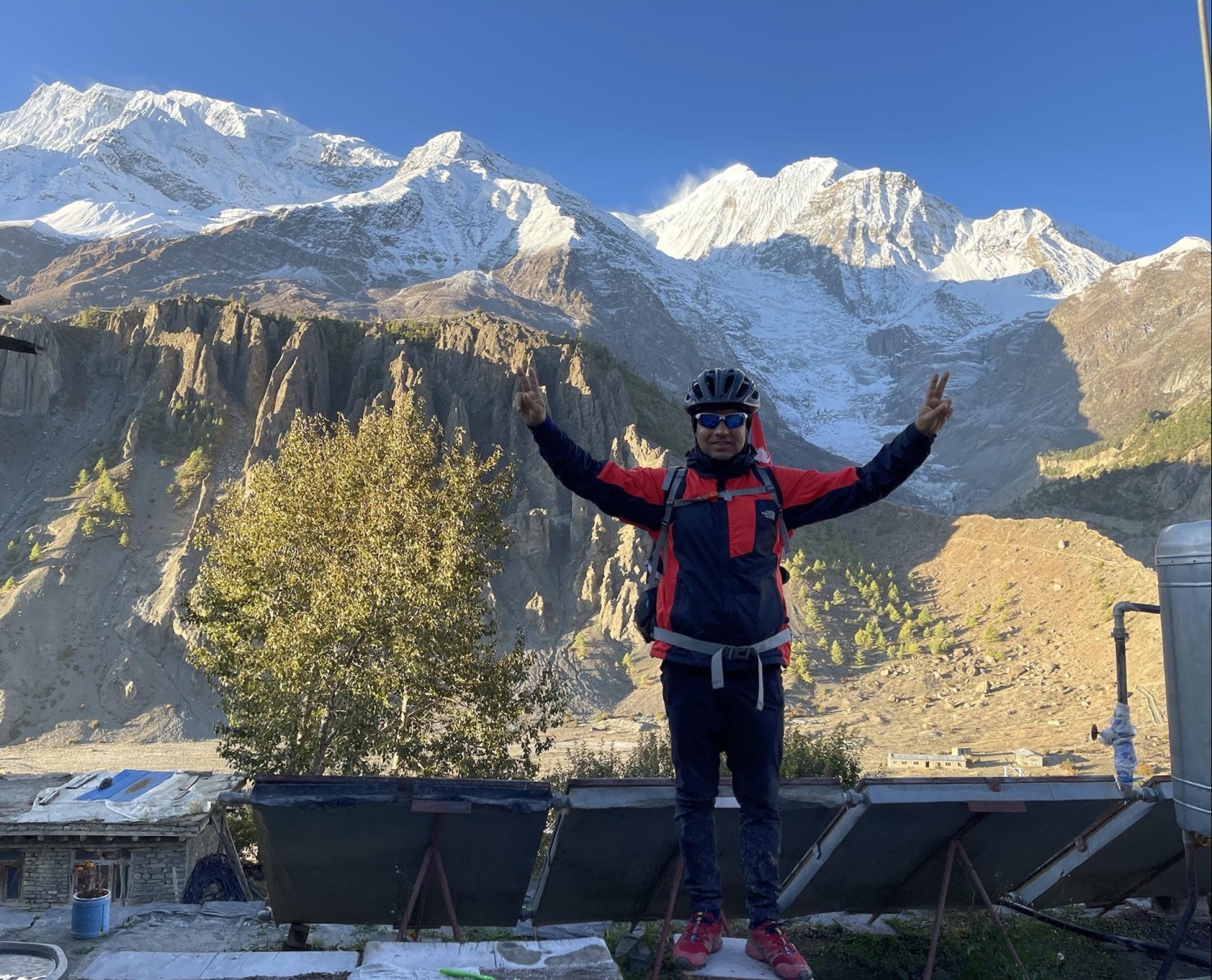Overview
One of the most followed routes, the Jomsom-Muktinath visit is an incredible experience. Home to some of the roughest landscapes and terrains, these parts of Nepal have spectacular things to offer. The local and traditional villages, huge mountains, rare domestics, and a holy temple; this Jomsom Muktinath Mountain bike tour will give you the best times of your life.
Jomsom is a beautiful valley. This culturally rich town sits at an altitude of 2743 m, above the sea level. Jomsom sits on the lap of Mt.Dhaulagiri(8167m). This place stays dry for most of year. This is because it lies in the rain shadow from Annapurna. The hills are dry and steep.
There are lots of single tracks to ride your mountain bike. Also called the gateway to upper Mustang, Jomsom is a fantastic place to ride your cycle. The popular holy temple, Muktinath lies at the base of mountains and rocky hills. This Hindu temple is visited by thousands of Buddhists as well. People take a bath in freezing tap water and enjoy the eye grasping landscapes; nature has to offer.
The jeep road is mainly followed by mountain bikers. But there are lots of other terrains and tracks, where you can enjoy your ride. You can challenge yourself in those rocky and tough hills (with some safety, of course.)
Major Highlights of Mountain Biking from Jomsom to Muktinath
Stunning views of the Himalayas: The route from Jomsom to Muktinath offers breathtaking views of the Annapurna and Dhaulagiri mountain ranges, including the famous peaks of Nilgiri, Dhaulagiri and Annapurna South.
Challenging terrain: The trail is a mix of rough jeep tracks, rocky paths, and steep inclines, making it a challenging but rewarding ride for experienced mountain bikers.
Cultural experiences: The route passes through traditional villages, giving riders the opportunity to experience the local culture and interact with the friendly locals.
Off-road adventure: The trail is mostly off-road, allowing riders to experience the rugged beauty of the region and the thrill of riding on challenging terrain.
Passing through the deepest Gorge: The trail passes through the deepest gorge in the world, the Kali Gandaki Gorge, making it a unique and unforgettable experience.
Passing through the highest point: The route passes through the Thorong La Pass, which is the highest point on the trail at an elevation of 5,416 meters above sea level.
Passing through different landscapes: The trail takes riders through a diverse range of landscapes, including lush forests, rocky deserts, and high-altitude plateaus.
Passing through temples and monasteries: The route passes through several ancient temples and monasteries, including the famous Muktinath Temple, which is a sacred pilgrimage site for both Hindus and Buddhists.
Passing through the holy river: The trail also takes riders through the holy river, Kali Gandaki, which is considered to be one of the most sacred rivers in Nepal.
A unique way to experience the Himalayas: Mountain biking from Jomsom to Muktinath offers a unique way to experience the beauty and culture of the Himalayas, providing a combination of adventure, culture, and natural beauty.
Short Itinerary
Day 1 :
Kathmandu to Pokhara; exploring Pokhara
Day 2 :
Fly from Pokhara to Jomsom(2743m). Bike to Kagbeni(2804m)
Day 3 :
Bike from Kagbeni to Muktinath(3800)
Day 4 :
Ride from Muktinath to Tukuche(2586m)
Day 5 :
Ride to Tatopani(1190m)
Day 6 :
Ride to Beni, and drive to Pokhara.
Day 7 :
Drive back to Kathmandu





 Hotel
Hotel
 MEALS
MEALS Breakfast , Lunch and Dinner
Breakfast , Lunch and Dinner








 Pokhara
, Pokhara
Pokhara
, Pokhara 







LiliPokhara, NepalOn 2023-01-16
Highly Recommended
It was wonderful Trip with team Nepal. Amazing mt niking tour organized by team trip pokhara . Thank you very much for everything.